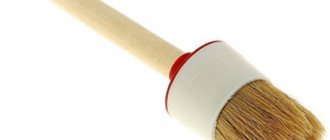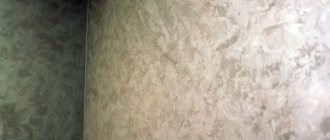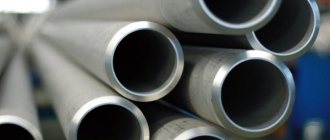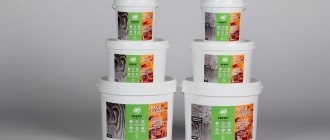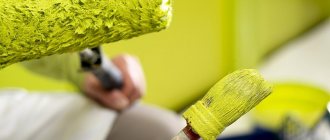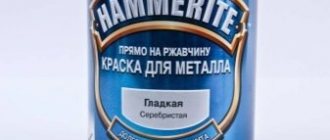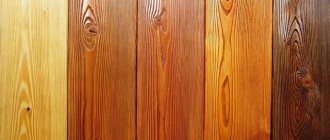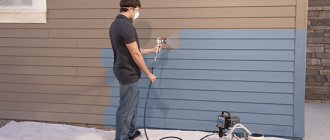The need to restore or repaint the decorative coating on plastic parts and PVC cladding arises much more often than it might seem at first glance. This could be the surface of metal-plastic veranda windows, the housing of home appliances, a soft inflatable boat, plastic body parts on a car, and even protective fabric covers. Painting PVC plastic is not particularly difficult, but on one condition, if you have special paint for PVC.
Features of the interaction between PVC and CM
The tenacity of KM with a plastic base is the quality that first of all draws attention to. PVC is characterized by a hard, dense structure and a slippery surface. Such surface features reduce adhesion to paint.
In addition, you need paint for PVC plastic that has the following technical characteristics:
- resistance to interaction with water;
- coating strength;
- resistance to various mechanical damage;
- tolerance to direct sunlight;
- color fastness;
- the composition is harmless, components harmful to health are not released after drying;
- resistance to temperature fluctuations;
- long service life;
- a range of shades and the ability to create different textures on plastic.
Most often, painting PVC is done independently at home, so you need paint that is easy to work with.
KM polyurethane-acrylic composition
The water-based polyurethane-acrylic composition for painting PVC has all of the above characteristics. The manufacturer offers PaliPlast RP 2040 base for use. This is a semi-matte acrylic with a base composition for PVC in white, which is later tinted to the desired color.
The result of the work will be a uniform coating that is not subject to deformation. CM dries quickly. Additives are added to the composition, which allows you to create different textured coatings. You can add pigments yourself and get the desired shade. The color is selected from 2000 shades proposed by the manufacturer.
There are traditional design options in color and non-standard solutions: glitter is introduced into the composition, a metallic color is selected, and a pearlescent coating is applied. This painting of a PVC profile will add uniqueness to the building or its facade.
The coating will last at least 10 years with daily use. Since the paint is non-toxic, it can be applied even in rooms with poor ventilation.
The polyurethane-acrylic composition creates molecular adhesion on the plastic, which allows you not to remove the gloss from the surface being painted, but to apply the material on top. It is important that the coating will be of the same quality wherever the PVC is painted: at home or in the production workshop.
Stages of surface preparation for applying paint
To avoid painting doors, windows or window sills, any plastic surface is pre-prepared. Preparatory work is done in stages:
- Objects are removed from plastic structures that are attached to it and will interfere with painting. These are blinds, mosquito nets, curtains and ebbs;
- Use compressed air to remove dust from the plastic;
- the surface is thoroughly cleaned of grease stains and mechanical impurities;
- construction tape is needed to cover rubber seals on windows and various fittings so that drops of dye do not accidentally fall on them;
- The glass is covered with plastic film or newspaper;
- At the stage of cleaning and degreasing plastic, special activators and cleaners intended for plastic are used. Before painting PVC, wipe it with a cloth soaked in such a cleaner. After this, wait at least 5 minutes and a maximum of 10 minutes for the surface to dry and for the applied composition to evaporate. Next comes the painting of PVC;
- if the plastic is scratched, there are roughness or unevenness on it, then all defects are removed with putty. The surface is puttied, sanded with fine-grain sandpaper, and primed. All the work is not complicated and can be done independently, but if you are not sure, then it is better to turn to the experts.
Coloring of plastics | Ready-made technologies for painting various types of plastic
Today, on the industrial market, and simply in everyday life, there are many different products, things or parts made of plastic (plastic). These can be plastic windows, various household goods or household appliances, car interior parts, motorcycle parts, toys, stationery items, decorative elements and much more. According to statistics, in the last year alone, the Russian automotive industry's demand for polymer products ( plastics ) has increased to 180 thousand tons per year.
Many enterprises produce their goods from
plastic , since this material is considered the most economical, flexible and ergonomic, for example, than wood or metal. Many produce goods from colored plastic (i.e. they purchase plastic or products made from it in a certain color), but this type of procurement limits the consumer’s choice and therefore the manufacturer faces the task of painting plastic products depending on the customer’s needs and trends in the market. market.
Painting products made from a material such as plastic is not a very simple matter. The most important thing, which is most often the problem when painting plastic , is determining the type of plastic from which the thing is made and selecting the right paint and varnish material for it. painting technology will depend on what type of plastic we paint . Plastic (plastic), or rather some of its types, have a very poor ability to adhere the future paint coating to the substrate, so more often than not it is necessary to develop individual cycles for painting plastic with additional tests for adhesion (adhesion) of the paint and varnish material.
Types of plastics and possible problems with paint adhesion
When painting plastic, the greatest difficulties will be created by the surfaces of non-polar masses. Non-polar masses have a very porous, chemically inert surface with low surface tension. The lower this surface tension, the worse the plastic will be painted , since there will be absolutely no adhesion (adhesion) of this surface to the paint and varnish material.
Therefore, it is initially necessary to analyze the types of existing plastics and determine which types of plastic have this undesirable property.
In general,
plastic (plastic) is a material whose main components are high-molecular organic compounds that are formed as a result of the synthesis or transformation of natural products. When processed under certain conditions, they tend to exhibit plasticity and the ability to be molded or deformed. For various types of production plastic is the most convenient material, since it has high strength, but when heated it becomes quite plastic, which allows you to “blind” almost anything out of it in this period of time.
Let's look at several main types of plastic most often used in industrial production. us to find out what type of plastic . For example,
- PET or PETE – polyethylene terephthalate (or simply polyethylene). This type of plastic is used for the manufacture of upholstery, packaging, and disposable cups. This type of plastic is not recommended for the manufacture of children's toys and for further processing, therefore, painting of PET plastic is generally not required in production. If, nevertheless, such a task is faced by the manufacturer, then special consultation with a paintworks technician will be necessary to develop an individual painting system and preliminary tests.
- PVC or V - polyvinyl chloride (or simply PVC ). This type of plastic is used for the production of plastic windows, blinds, furniture, pipes, various chemical equipment and much more. Painting PVC does not have any particular difficulties; now there are special paints and varnishes ( paints for plastic ) that can be applied directly to PVC plastic without prior priming. coloring cycle below.
- RR – polypropylene – I use polypropylene to make pipes, children’s toys, containers, and parts for the automotive industry. Polypropylene is a virtually harmless type of plastic. Of all types of plastic polypropylene has the lowest surface energy, so polypropylene products are the most difficult to coat. At coloring of polypropylene you need to use a special priming-activator for plasticand then apply to the surface paint for plastic.
- PS - polystyrene - this type of plastic is used for the manufacture of sandwich panels, building boards, cutlery, food trays, cups. Polystyrene is not recommended for reuse and when burned it releases toxic styrene. Most often, painting of polystyrene parts is not required.
- PC / PA / OTHER – polycarbonate, polyamide and other types of plastics. They are used for the manufacture of radio components, equipment, and precision parts for machines. When painting these types of plastic , the manufacturer will not have any difficulties; you can apply paint for plastic directly to the surface, only after thoroughly degreasing the parts.
- ABS plastic is a very popular type of plastic in production, used for the manufacture of mobile phone cases, cases, electronic devices, and household appliances. ABS plastic has very high performance indicators, namely mechanical resistance and protection from environmental factors. ABS plastic can also be painted absolutely any color without unnecessary complications; paint for plastic can be applied to the surface without prior priming.
- Fiberglass is a unique type of plastic with very low thermal conductivity (like wood), increased strength (like steel), weather resistance and biological resistance. Fiberglass is used to make window and door profiles, swimming pools, boats, body kits for cars and trucks, and much more. After giving fiberglass parts a certain shape, deep pores appear on their surface, so painting of such products must take place in several stages, possibly even with double priming of the surface.
Professional painting technologies for the main types of plastic
Once the type of plastic you can begin selecting a cycle for painting plastic surfaces . In painting production areas, the time spent on painting one part is one of the important factors when choosing a painting . Experts have developed and tested the most simplified painting depending on the type of plastic being painted.
Painting of plastics such as PVC (PVC), PC (polycarbonate), ABS plastic, PA (polyamide)
When painting these types of plastic, plastic paints with direct adhesion to the surface will be used Before painting, it is necessary to thoroughly degrease the surface with a special compound and paint the plastic surface in 1 layer.
Painting system:
Degreasing with plastic degreaser PLASTIC CLEANER 00617 + Gloss paint for plastic ALCEA 5820 in 1 layer or Matte enamel for plastic ALCEA 5821 in 1 layer
Paint for plastic can be presented in any solid color (24,750 colors) or in spectacular metallic, xerallic or pearl colors.
Coloring of polypropylene (PP)
For painting polypropylene , a painting system was developed using an activator primer to improve the adhesion (adhesion) of the future paint and varnish material to the plastic surface.
system :
Degreasing with plastic degreaser PLASTIC CLEANER 00617 + Primer-activator for painting polypropylene ALCEA 05752 in 1 layer +
Glossy paint for plastic ALCEA 5820 in 1 layer or Matte enamel for plastic ALCEA 5821 in 1 layer.
Painting fiberglass or gelcoat surfaces
When painting fiberglass or gelcoat surfaces, specialized paints and varnishes with increased adhesion to this type of substrate will be used.
or gelcoat paint systems
- Degreasing with plastic degreaser PLASTIC CLEANER 00617 + Acrylic enamel ACRYL 2K 29143 (LS143) with direct adhesion to the plastic surface in 1 layer
- Degreasing with plastic degreaser PLASTIC CLEANER 00617 + Matte acrylic paint ACRYL 2K MATT 29152 (LS152 ) with direct adhesion to the plastic surface in 1 layer
- Degreasing with plastic degreaser PLASTIC CLEANER 00617 + Acrylic highly matte enamel ACRYL 2K MATT 7% GLOSS 29153 (LS153) with direct adhesion to the plastic surface in 1 layer.
painting cycles for the main types of plastic used in production showed the best adhesion indicators, wear resistance indicators of paintwork during product operation, and the shortest time spent on painting one plastic product.
Painting various types of plastic is one of the most difficult tasks facing manufacturers and their paint shops, but at the moment the experience of technicians, multiple tests and high-quality innovative paints and varnishes make this process the least labor-intensive.
Based on all of the above, it is worth remembering that the most important point when painting plastic will be determining the type of plastic to be painted. Nothing is impossible, and undesirable results in painting plastic can be avoided at the earliest stages. If you need help in selecting the most suitable painting system for plastic products , call us at 8-812-902-50-28 and our specialists will tell you in more detail about possible options for painting plastic parts depending on your needs and the needs of your production.
PVC painting technique
PVC dyes are applied to the surface using a spray gun. First, the polyurethane-acrylic CM is completely prepared: pigment is added and mixed until a homogeneous composition is formed. Tinting is carried out before painting itself. The viability of the dye after mixing with the hardener is confirmed for 2 hours. After this, the spray gun is filled with it by passing it through a funnel filter.
When a factory container of paint is opened, a film is often visible on its surface. It must be removed and not mixed with the dye. The film composition has solid insoluble particles and if you do not remove them, the spray gun will constantly clog.
The consistency of the paint resembles thick sour cream. Thick material is diluted with water (no more than 10% is added). Viscosity is checked with a VZ-6 viscometer. Recommended viscosity: 30 sec.
Advice: if the polyurethane-acrylic material froze during storage, then after it was thawed, all technological characteristics were lost. Therefore it is not suitable for use.
The work is carried out in dry, warm weather. The temperature on the thermometer should be no less than +5°C, humidity no more than 80%. But not at high air temperatures.
CM application thickness: 80-120 microns. After application, the dye does not flow off a vertical surface and adheres well. Usually one coat of coating is sufficient. But if necessary, the coloring can be repeated. The second layer is applied at the moment when the previous one has become semi-matte. If the air temperature is +18°C, then it is enough to wait about 20 minutes between applying layers.
After 2-3 hours the coating becomes dense. After 48 hours the material is completely dry.
In specialized industrial workshops, plastic products are dried at a temperature of +50°C. This technology is called forced drying. The paint dries completely in 2 hours.
Metallic coating technology
The metallic effect on plastic is achieved in 2 ways:
- the process proceeds with the application of 2 layers: the first layer is paint with a “metallic” effect with a thickness of 60-80 microns; the second is a colorless varnish for PVC with a thickness of 60-80 microns. Between application of the second layer, a drying time of up to 4 hours is maintained.
- one layer is applied. Metallic paint is pre-prepared. It contains 20% colorless varnish. The plastic is covered with a material 60-80 microns thick.
Production of MDF with paint and MDF with film
The film is applied to MDF facades using a press, creating high temperature and vacuum. Paint is applied under normal conditions: at “room” temperature, with existing atmospheric pressure. First, the surface of the MDF facade is coated with a primer. Next, a special enamel is applied. If necessary, additional layers of enamel are applied and the façade is varnished.
The properties of furniture facades also depend on coating technologies.
KM in aerosol cans
A small plastic object can be painted with CM in an aerosol. Since the entry of air into the container is completely excluded, there can be no film on the CM.
Pros of using spray paint:
- high degree of tenacity with plastic;
- The dye is easily applied in all hard-to-reach places;
- small parts are covered in an even layer;
- no additional painting tools will be needed;
- the can can be easily delivered to any distance.
This method of painting is often used for PVC surfaces in car interiors. In order for the coating to be smooth and evenly distributed over the entire area, experience is still needed. Pre-training won't hurt.
Additional protection
Acrylic dyes have good adhesion to PVC. But you can increase the service life of the coating by additionally protecting it with a glossy water-based plastic varnish. In addition, the product acquires shine and a beautiful appearance.
This additional protection is relevant for window sills and windows in the kitchen. The impact of aggressive factors is reduced.
The protective layer is applied with a brush. There are no difficulties in the work, so you can apply the varnish yourself.
If the window sill or plastic pipe is located close to the fire source, then they are covered with fire-retardant CM. These are compositions intended for coloring metal.
Consolidate the result
Acrylic paints after processing PVC products are able to stay on the surface for quite a long time. But you need to use a gloss varnish to provide additional protection. Such materials are created on a water basis and play the role of a decorative coating, making the product shiny. After painting, PVC plastic looks attractive.
Such compositions are excellent for processing almost any PVC product that has already been painted previously. Especially in rooms where the surface is constantly negatively affected. Applying varnish does not require additional skills; it is enough to use a regular brush or aerosol.
